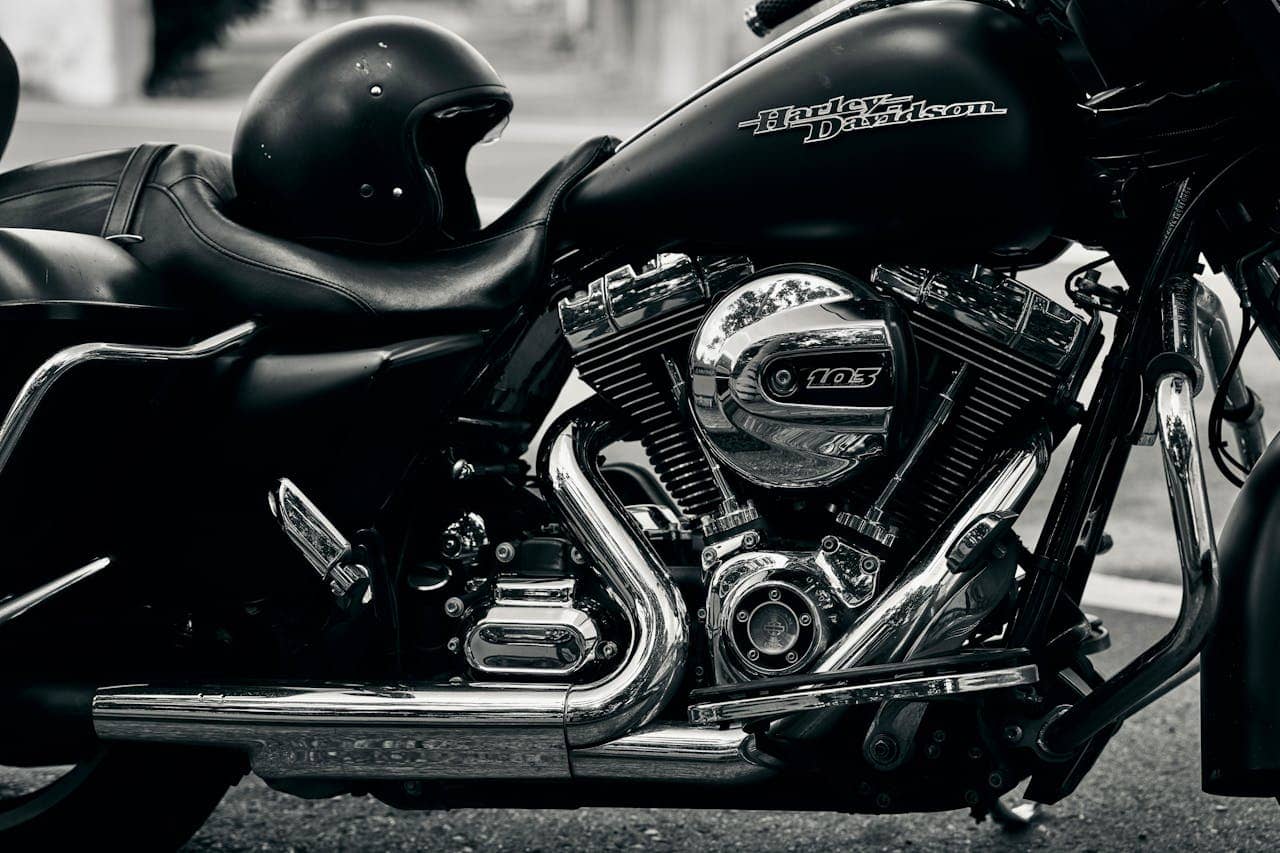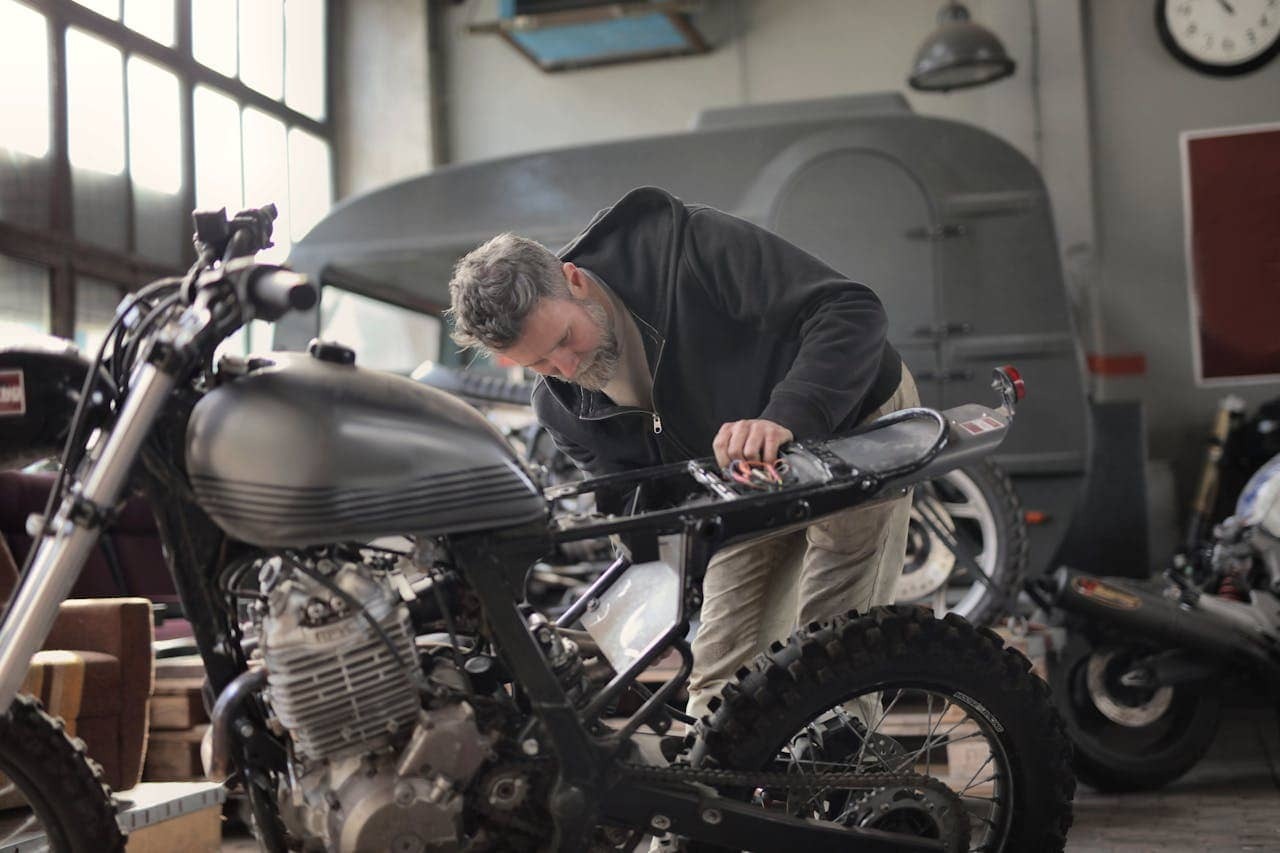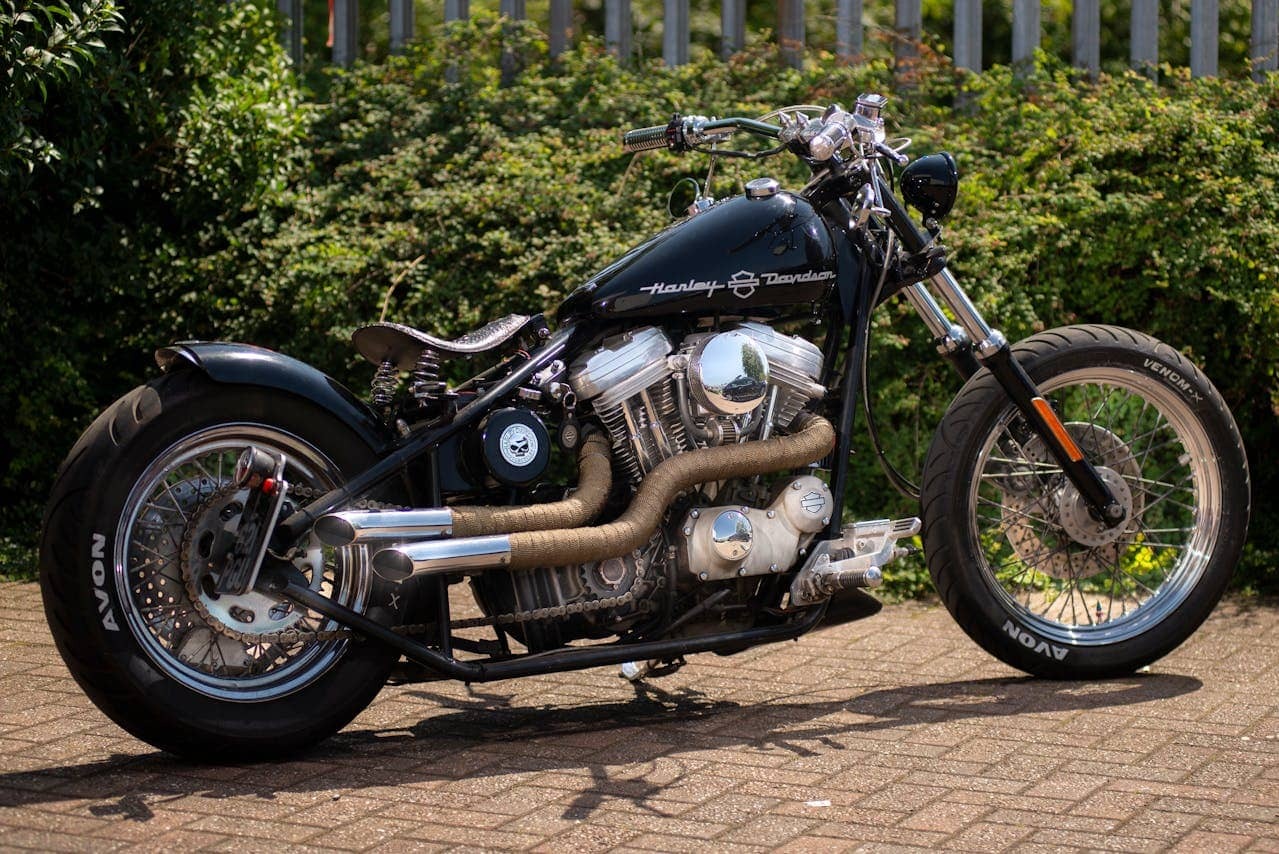- Exhaust wrapping reduces heat, protects nearby motorcycle parts, and gives your bike a rugged, custom-built look.
- All you need are some clamps and fiberglass, titanium, or basalt wrap, and the process is straightforward.
- Once you’ve wrapped it up tight, you can bolt on a Boneshakers slip-on and turn your bike into a beast.

A properly wrapped exhaust is one of the best ways to customize your bike. It’s a stylish DIY project that gives your bike a unique, rugged look. Whether you want a tighter setup, more control over heat, or just a raw, classic look, exhaust wrapping is a next-level enhancement you can do in just a few hours. If you’re ready to make this upgrade, read on to discover why wrapping a motorcycle exhaust is a killer idea, what equipment and supplies you’ll need, and how to do it yourself.
Supplies You’ll Want for the Upgrade
Part of knowing how to wrap your exhaust is having all the equipment, supplies, and tools you’ll need before you begin. Here’s what you’ll need:
- Exhaust wrap: Usually made of titanium, basalt, or fiberglass, exhaust wraps are the star of the show. Although titanium is known for its strength and resistance to heat, fiberglass is more reasonably priced. If you choose basalt, you’ll be using the high-end option. It’s made from lava and can handle extreme heat without breaking down.
- Stainless steel zip ties or clamps: Zip ties or clamps are used to secure the ends of the wrap. Stainless steel is often used because it’s durable under heat and has aggressive styling.
- Safety gear: If you want to know how to wrap your exhaust safely, wear a dust mask and glasses. Fiberglass is cheap, flexible, and readily available – but extremely itchy, so also make sure you wear gloves.
- Bucket of water: Fiberglass becomes more flexible, less irritating, and easier to pull tight if you soak it in water. If you’re using titanium or basalt, just skip this step.
- Scissors or a knife: You’ll need to cut the wrap to the right length with a knife or scissors. Just make sure you get enough wrap so you don’t run out halfway.
- Degreaser and a rag: Cleaning the surfaces before wrapping a motorcycle exhaust means better adhesion, tighter wraps, and less slippage.
How to Wrap the Exhaust

Everything’s ready – let’s begin. Below is a detailed step-by-step guide to help you install heat wrap on your exhaust like a pro.
Pull Off the Exhaust
Unbolt the exhaust and remove it. Use this opportunity to check for damaged welds, small holes, or broken brackets. A degreaser and a rag can be used to clean rusty surfaces. Give everything a solid cleanup because wrap sticks best to dry, clean metal.
Soak the Wrap in Water
If you’re using fiberglass wrap, soaking the wrap in water prevents fiberglass from going airborne, and it makes the wrap more flexible. Wet fiberglass wrap also stretches, which is why riders who know how to wrap their exhausts and use wet fiberglass often achieve the desired result. If you’re installing titanium or basalt wrap, don’t soak it in water, as it’s designed to be applied dry. These types of materials are tough, flexible, and heat-resistant, so they don’t need any soaking.
Start Wrapping Your Motorcycle Exhaust

You can get a dialed-in look if you start wrapping as tightly as possible. This will also prevent creases and make sure it doesn’t become loose over time. Start where the pipe meets the engine and pull the wrap tight, overlapping the previous layer about halfway with each wrap. This is how to wrap an exhaust and make it stick. If you can get an overlap working quickly enough to tighten the wrap, you don’t have to fasten the end.
Otherwise, clamp the end down with a stainless tie or hose clamp. Wrap in the direction of the gas flow so vibration and wind won’t cause it to become undone. Keep the material tight as you wrap to prevent any slack. Pull firmly, and if you see any unevenness in your layers, just go back and fix it. When you reach the end, clamp it down hard with stainless steel clamps or zip ties and crank them tight using pliers.
To make sure the wrap remains in place over time, you may need to use more ties at different points along longer pipes. This is how you wrap an exhaust properly if you’ve got long pipes that unleash serious noise. Then, use a utility knife or scissors to remove any excess material. After everything has been clamped and coiled, give it some time to dry out. It will take a few hours if you used fiberglass. When you fire up the bike later, it’ll probably smoke a bit, but that’s just normal as the moisture wears off.
Benefits of Wrapping a Motorcycle Exhaust
Wrapping your exhaust isn’t just about style—it’s also got functional benefits. Here’s why it’s a solid upgrade for any rider who likes to wrench.
- Keeps the heat in the pipes: Heat regulation is one of the main reasons for wrapping an exhaust. If you’ve done this before and already know how to wrap an exhaust, you’ll probably know that the wrap traps heat inside the pipes. That means the pipes give off less heat, and, in some cases, you may notice better performance.
- Keeps heat off your legs: By lowering the external surface temperature of your exhaust, wrapping helps keep heat off your legs. So the next time you’re cruising, your leg won’t get burned in stop-and-go traffic, and your boots won’t melt on a hot pipe.
- A bold, rugged look: Exhaust wrap gives your bike a rugged, garage-built look that turns heads. Some riders go all in and wrap the pipes for heat control and slap on a slip-on muffler for sound.
- Reduces wear on nearby parts: Heat destroys everything, including plastics, wires, and hoses. If you know how to wrap your exhaust, it will protect nearby parts from heat, so there’ll be less melting and breaking.
Keep an Eye on Your Wrap
Wrapping a motorcycle exhaust is a process that needs maintenance, just like your bike. Here’s how you can maintain it properly.
- Check it regularly: Take a look at your pipes every few rides. Check for discoloration, burns, or loose ends, especially near the ports where temperatures are high. Snip, seal, or re-clamp any areas before they get worse.
- Wrap it again if needed: Rewrap it if it looks torn, burned, or coming apart at the seams. If you’ve done it before, you’ll already know how to wrap your exhaust, so it will be easier to do.
- Use silicone spray: If you want to seal the wrap, apply a few coats of silicone spray. It locks in the fibers, keeps moisture out, and adds some color uniformity.
Wake the Beast
When you start your bike, it may give off some steam, but this will eventually subside. Wrapping a motorcycle exhaust gives your bike that raw, stripped-down look. It also improves airflow, keeps things cooler, and looks aggressive. So now that you know how to wrap your exhaust, grab that roll and make it happen. Boneshakers also has a range of Harley-Davidson slip-on mufflers with guaranteed fitment and free shipping on orders over $99. Crank up the sound and turn your bike into a beast.

